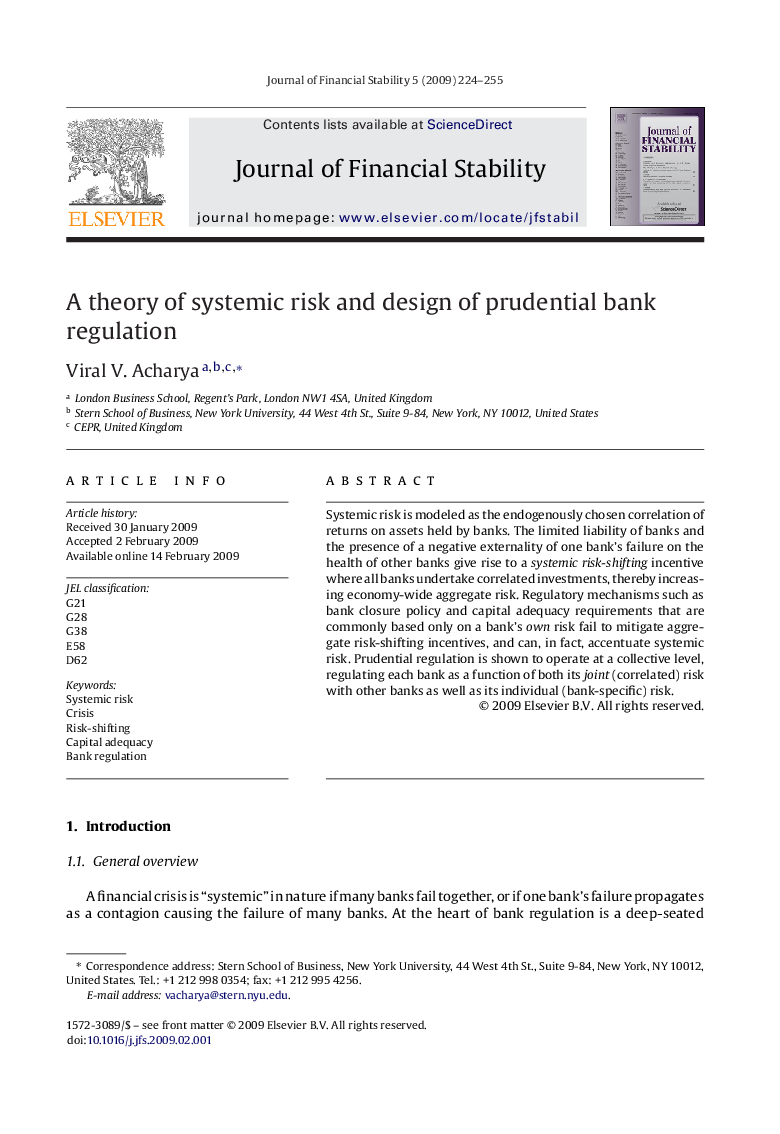| Article ID | Journal | Published Year | Pages | File Type |
|---|---|---|---|---|
| 998497 | Journal of Financial Stability | 2009 | 32 Pages |
Systemic risk is modeled as the endogenously chosen correlation of returns on assets held by banks. The limited liability of banks and the presence of a negative externality of one bank’s failure on the health of other banks give rise to a systemic risk-shifting incentive where all banks undertake correlated investments, thereby increasing economy-wide aggregate risk. Regulatory mechanisms such as bank closure policy and capital adequacy requirements that are commonly based only on a bank’s own risk fail to mitigate aggregate risk-shifting incentives, and can, in fact, accentuate systemic risk. Prudential regulation is shown to operate at a collective level, regulating each bank as a function of both its joint (correlated) risk with other banks as well as its individual (bank-specific) risk.
